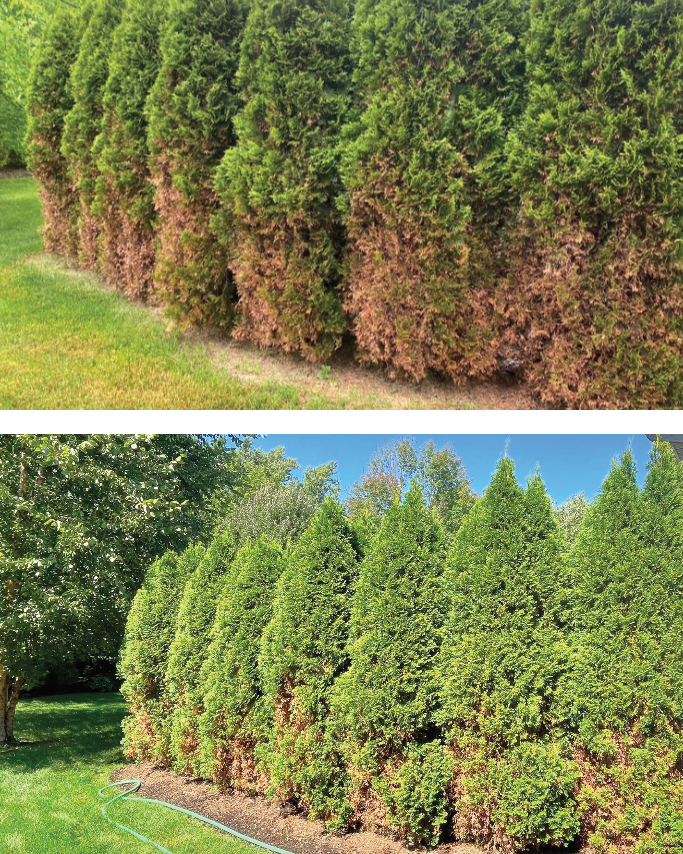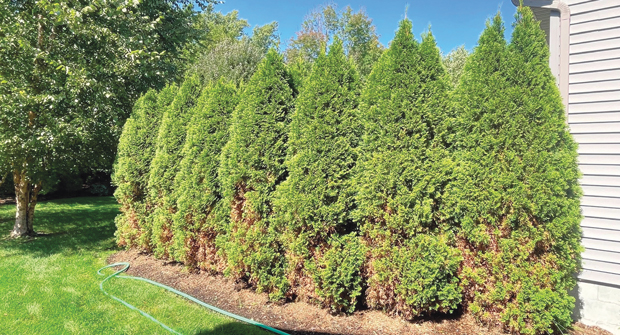
Soil health is a critical part of growing healthy turf, shrubs and trees. Experts share what you should think about with soil health and how it affects your clients’ plants and turf.
“Soil health is arguably the single most important factor we have any control over when it comes to pesticide-free plant health care,” says Kevin Brewer, Northeast territory technical manager for Arborjet | Ecologel. “Good soil health can reduce plant health stressors outside of our control.”
John Perry, founder of Greene County Fertilizer Co., says improving organic matter leads to less compaction, better nutrient uptake and more efficient water use.
“If people do want to have a lawn, then they’re going to have to try to have the most efficient lawn possible,” he says. “One that doesn’t require a lot of water, which requires more organic matter in the soil. A better soil system is going to be vital going forward.”
Where to get started
The first step to improving soil health is to understand what kind of soil is on the property. Experts suggest utilizing state cooperative Extension resources to help you conduct a soil assessment.
After conducting soil tests, Jeremy Elliott learned many of his company’s clients had soil with low organic matter and high pH. Elliott is owner of MyLawn! Turf & Tree in Great Bend, Kan. The company now uses a custom blend fertilizer featuring biosolids as filler (instead of lime) and ammonium sulfate with water-insoluble nitrogen (instead of urea). This approach helps lower the pH in his clients’ soil, he says.
“We’re having more consistent green throughout the season,” he says. “It’s taken three or four years of us using (our custom blend) to where we’re putting less fertilizers down, having just as good of results and later dormancy (with) earlier green up.”
Perry says soil tests help LCOs understand what types of amendments to add instead of throwing blanket applications of fertilizer.
“You can grow good-looking turf in bad soil. We have enough fertilizer we can throw at it if people can just pound the ground over and over and over in order to maintain that,” he says. “Or you can take a different approach and you can minimize all these fertilizer inputs that you’re putting out and start addressing some of the soil issues.”
Soil health and trees
Soil health affects trees and shrubs in many ways, says Jay Herman, owner of Monster Tree Service of Rochester, N.Y. Trees that change color early, drop leaves early or have limbs falling off could indicate a soil pH issue or excess salinity.
“People are cleaning up the leaves, they’re cleaning up the grass clippings, so trees are not getting all the nutrients from organic matter that the tree would if it was growing in the woods,” he says.
Elliott says the main focus of his turf and ornamental rotation is to improve soil health and mycorrhizae colonization surrounding tree root hairs. He says in the soil samples from his area, most soils have ample supply of potassium and phosphorous.
“Excessive phosphates in the soil ruins that relationship between mycorrhizae and fine root hairs,” he says. “It doesn’t kill the mycorrhizae, but it prevents them from binding to root hairs because there’s too many phosphates in the soil.”
Herman says it’s hard to change the structure of the soil. So, a better course of action would be to select plants better suited for the soil.
“You need to consider matching the plants with the environment,” he says. “Plants will thrive if they are in the right type of soil. Some plants do better in a soil that has a higher pH, while other plants will survive better in soil with a lower pH.”
Simple adjustments
Perry says following the soil test, LCOs can use the information gleaned from the test to come up with a plan to improve soil health.
“That can either be done through top dressing with compost or aerating and top dressing with other organic materials, adding humic substances to their fertilizer program,” he says.
Perry says this isn’t something that will happen overnight.
“Building healthy soil takes time,” he says.


